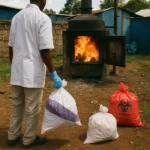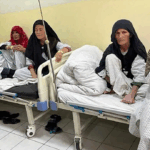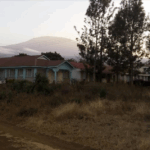Doubel Combustion Chamber
All Incinerators are Doubel Combustion Chamber with One Fuel Burner Each. After Burner Technology for Completely Combustion and Cleaner World.
Read MoreHigh Temperature Incineration
Temperature Range 800 Degree to 1200 Degree in Combustion Chamber. Temperature Thermocouple Monitor and Controller. High Quality Fire Brick and Refactory Cement.
Read MoreGet Lastest News
There are latest incinerator news like technical, public news, business tender for medical waste incinerator,animal incineration, pet cremation
Read MoreNanjing Clover Medical Technology Co.,Ltd.
Email: sales@clover-incinerator.com | Tel: +86-25-8461 0201
Regular model incinerator for market with burning rate from 10kgs to 500kgs per hour and we always proposal customer send us their require details, like waste material, local site fuel and power supply, incinerator operation time, etc, so we can proposal right model or custom made with different structure or dimensions.
Incinerator Model YD-100 is a middle scale incineration machine for many different usage: for a middle hospital sickbed below 500 units, for all small or big size family pets (like Alaskan Malamute Dog), for community Municipal Solid Waste Incineration, etc. The primary combustion chamber volume is 1200Liters (1.2m3) and use diesel oil or natural gas fuel burner original from Italy.
Latest Post
Medical Waste Incinerators in Kenya: Containerized Solutions for Hospitals, Camps, and Donor Projects
Medical Waste Incinerators in Kenya: Containerized Solutions for Hospitals, Camps, and Donor Projects
Medical Waste Challenges in Kenya County Hospitals
Across Kenya’s healthcare system, medical waste incinerators for county hospitals are becoming increasingly essential. Growing populations in Nairobi, Kisumu, and Mombasa have led to higher volumes of hazardous waste such as syringes, infusion bags, and contaminated plastics. To comply with NEMA regulations and international donor requirements, hospitals require incinerators that guarantee high-temperature destruction, low emissions, and easy maintenance.
Containerized Incinerators for Mining and Energy Camps
Kenya’s expanding mining and energy camps in Turkana, Kitui, and coastal regions also generate large amounts of biomedical and general waste. Transporting this waste to centralized facilities is impractical and costly. For this reason, many projects are adopting containerized incinerators for Kenya mining and energy camps, which can be delivered pre-installed in 20ft or 40ft ISO containers. These mobile systems provide immediate waste destruction capacity on-site, reducing environmental risks and ensuring compliance with local and international standards.
Wet Scrubber Equipped Incinerators for Donor-Funded Projects
International organizations such as WHO, UNDP, and the World Bank often fund projects in Kenya that require strict adherence to global emission standards. In these cases, wet scrubber equipped incinerators for Kenya donor-funded projects are the preferred solution. Wet scrubbers neutralize acid gases like HCl and SO₂, minimize smoke, and protect surrounding communities from harmful pollutants. HICLOVER offers scalable emission control packages, including:
-
Basic wet scrubber systems with spray towers and ID fans.
-
Secondary washing scrubbers with cooling and defogging functions.
-
Advanced multi-stage systems with quench towers, activated carbon dosing, and baghouse filters for maximum compliance.
HICLOVER TS300: A Robust Choice for Kenya
The HICLOVER TS300 incinerator is designed for high-volume waste streams in hospitals and industrial camps:
-
Capacity: 250–300 kg/hour burn rate.
-
Primary Chamber: 2,800 liters with reinforced refractory lining.
-
Secondary Chamber: ≥1100°C with ≥2-second retention time.
-
PLC Automation: Fully automated ignition, burner control, and temperature monitoring with safety interlocks.
-
Containerized Deployment: Ready-to-use mobile unit for rural hospitals, mining operations, and refugee camps.
-
Optional Ash Removal System: Improves operator safety and efficiency in high-throughput environments.
Applications Across Kenya and East Africa
-
County Hospitals: On-site waste destruction ensures compliance with NEMA standards and WHO guidelines.
-
Refugee Camps: Mobile units provide reliable waste management for humanitarian operations in Kakuma and Dadaab.
-
Mining and Energy Camps: Containerized systems offer sustainable solutions for industrial projects far from urban centers.
-
Donor-Funded Clinics: Wet scrubber-equipped models meet the strictest environmental requirements for international aid projects.
Conclusion
From medical waste incinerators in Kenya county hospitals to containerized solutions for mining and energy camps, and wet scrubber-equipped incinerators for donor-funded projects, HICLOVER provides reliable, mobile, and environmentally compliant technology. With models like the TS300, Kenya’s healthcare and industrial sectors can achieve safe, sustainable, and cost-effective waste management.
For technical specifications and procurement support:
www.hiclover.com
sales@hiclover.com
Building a Safer Future for Immunization Waste in Afghanistan with HICLOVER Solutions
Building a Safer Future for Immunization Waste in Afghanistan with HICLOVER Solutions
Healthcare Waste: A Critical Gap in Afghanistan
Afghanistan’s immunization programs are a lifeline for millions of families in remote and underserved provinces. Yet, every successful vaccination campaign produces its own challenge: piles of sharps, glass vials, and contaminated packaging. Without proper treatment systems, these materials often end up in open pits or low-temperature burners, exposing both health workers and communities to infection and toxic emissions.
Recent assessments have shown that fewer than half of health facilities have access to waste management guidelines, and only a fraction consistently return immunization waste to designated disposal sites. The result is a pressing need for standardized, sustainable equipment that can be deployed at regional hubs and trusted by frontline workers.
Introducing the HICLOVER TS50 PLC
The HICLOVER TS50 PLC incinerator was engineered to meet precisely these challenges. Compact enough to fit within the proposed 2.5 × 4 m installation rooms, it offers a reliable throughput of up to 50 kg per hour—the right balance for handling immunization waste streams from multiple facilities.
Notable Features
-
Dual-Chamber Combustion: Primary chamber destroys solids, while the secondary chamber holds gases at ≥1100°C for two seconds, neutralizing pathogens and minimizing emissions.
-
PLC Automation: Operators can monitor temperatures, alarms, and cycle times from a digital interface, reducing risks of human error.
-
Safety by Design: Doors are sealed with refractory materials, fuel lines are protected by flame arrestors and shut-off valves, and the system includes diesel leak detection for added protection.
-
Durability: Refractory lining with 65% Al₂O₃ resists continuous high heat, extending service life under harsh conditions.
Safeguarding the Workforce
HICLOVER understands that technology alone is not enough; the people running these systems must be protected. That’s why every unit is delivered with:
-
Three complete PPE kits (heat-resistant aprons, gloves, and boots).
-
Two years of spare parts, ensuring uninterrupted operation even in difficult-to-access provinces.
-
Training modules designed to enable local personnel to operate and maintain the units independently.
A Scalable Model for NEPI and Beyond
By deploying these incinerators at the regional Expanded Program for Immunization sites in Kandahar, Nangarhar, Herat, Balkh, and Paktya, Afghanistan is taking a decisive step toward eliminating unsafe practices like open burning. Each site can handle up to 400 safety boxes and 1,000 vials daily, setting a precedent for modern waste management across the country.
The HICLOVER TS50 PLC is more than a machine—it is a bridge between urgent public health needs and long-term environmental responsibility. Its success in Afghanistan can serve as a scalable model for other regions of South and Central Asia facing similar challenges.
afghanistan immunization waste incinerator project
HICLOVER TS50 PLC medical waste disposal
dual chamber diesel incinerator for vaccination waste
incinerator with flame arrestors and PPE package afghanistan
regional healthcare incinerator solution NEPI Afghanistan
spare parts package incinerator kandahar nangarhar balkh herat paktya
Contact
For more information on HICLOVER medical waste incinerators and customized solutions for healthcare and humanitarian projects:
-
Website: www.hiclover.com
-
Email: sales@hiclover.com
-
WhatsApp: +86-13813931455
Waste Incineration Solutions for the Maldives Hospitality Industry
Waste Incineration Solutions for the Maldives Hospitality Industry
The Maldives, known worldwide for its pristine beaches, luxury resorts, and thriving tourism sector, faces a growing challenge: sustainable waste management. As an island nation with limited land resources, the disposal of solid waste from hotels, resorts, and local communities is a pressing issue. Traditional landfilling is not feasible due to scarce land and environmental sensitivity, making modern incineration systems the most practical and environmentally compliant solution.
Waste Challenges in the Maldives
Tourism generates a significant volume of daily waste, particularly in resort islands where international visitors demand high standards of cleanliness and safety. Common waste streams include:
-
Food waste and organic matter from hotels and restaurants.
-
Plastics, packaging, and paper from guest facilities.
-
General municipal waste generated by staff housing and local communities.
With landfill space limited and transportation between islands costly, hotels and regional councils are seeking on-site waste treatment systems that are compact, efficient, and environmentally safe.
Why Incineration is the Right Choice
Incineration offers direct and complete destruction of mixed solid waste, reducing volume by up to 95% and converting residuals into sterile ash. Unlike landfill or composting, incineration ensures the safe treatment of plastics, contaminated packaging, and potentially hazardous waste generated in tourist zones.
Key benefits include:
-
Volume Reduction: Maximizes land savings on small islands.
-
Hygiene Control: Prevents odors, pests, and contamination in resorts.
-
Sustainability: Modern dual-chamber incinerators meet international environmental standards.
HICLOVER Incinerators for Island Resorts
HICLOVER specializes in containerized and mobile waste incinerators designed for challenging environments like the Maldives. Recommended models for the hospitality sector include:
-
TS50 PLC and TS100 PLC: Compact models with 50–100 kg/hour capacity, ideal for resorts and small island councils.
-
Containerized Systems: Fully enclosed in ISO containers, easy to transport between islands, and protected against coastal weather.
-
Dual-Chamber High-Temperature Design: Primary chamber at 850–1000°C and secondary chamber at 1100–1300°C with 2-second gas retention, ensuring compliance with WHO and EU standards.
Each system is lined with high alumina refractory bricks (65% Al₂O₃) for durability and equipped with optional wet scrubbers or dry scrubbers for emission control. This makes HICLOVER solutions well-suited for both resorts prioritizing eco-certification and government-backed waste management programs.
Supporting Sustainable Tourism in the Maldives
By implementing HICLOVER incineration systems, resorts and local councils in the Maldives can:
-
Achieve international sustainability certifications.
-
Enhance their reputation among eco-conscious travelers.
-
Protect fragile marine ecosystems by preventing waste leakage.
Learn More
HICLOVER continues to support island nations with tailored waste treatment solutions. For more details on incinerator options for the Maldives, visit:
Waste Management in Fiji: Current Status and Challenges
Waste Management in Fiji: Current Status and Challenges
Fiji, an island nation in the South Pacific with a population of around 900,000, faces unique challenges in waste management due to its geography, limited land area, and dispersed communities across more than 300 islands. Solid waste generation has increased in recent years, driven by urbanization, tourism, and economic growth.
Currently, the waste management system in Fiji relies heavily on:
-
Landfills: The main facility, Naboro Landfill (near Suva), handles the majority of municipal solid waste. Smaller islands have basic dumping sites, which often do not meet international sanitary standards.
-
Community collection points and transfer stations: These are common in urban and peri-urban areas but less organized in rural and outer islands.
-
Recycling: Recycling activities remain limited, mainly focusing on aluminum cans, PET bottles, and cardboard, with private companies and informal collectors playing important roles.
Key challenges include:
-
Limited capacity and funding for modern waste treatment infrastructure.
-
Illegal dumping and open burning, particularly in rural and informal settlements.
-
Vulnerability to extreme weather events, which can damage waste infrastructure and spread pollution.
Medical Waste Management and Incinerators
In the healthcare sector, medical waste incineration remains the primary method of treating infectious and hazardous waste.
Current situation:
-
Most large hospitals, such as Colonial War Memorial Hospital in Suva, Lautoka Hospital, and Labasa Hospital, use small- to medium-capacity medical waste incinerators.
-
Smaller clinics and health centers often lack dedicated on-site treatment and may transport waste to larger facilities.
-
Incinerators in Fiji are typically diesel-fueled, batch-type units designed to handle waste capacities from 10–50 kg/hour.
-
There have been reports of older incinerators operating below ideal combustion temperatures, leading to incomplete combustion and potentially harmful emissions.
Challenges:
-
Some rural health centers still resort to open burning or burial of infectious waste due to the lack of equipment.
-
Maintenance and spare parts for incinerators can be difficult to obtain.
-
There is increasing concern about air pollution and emissions standards, as public awareness of environmental health risks grows.
Future Policy and Planning
The Fijian government, through the Ministry of Environment and Ministry of Health and Medical Services, has been working on modernizing waste management, including medical waste. Key directions include:
National Solid Waste Management Strategy (draft updates):
-
Focus on reducing landfilling and promoting waste minimization.
-
Introduce stricter monitoring of hazardous and healthcare waste.
Plans for healthcare waste:
-
Gradual replacement of old incinerators with new, cleaner-burning models that meet international emissions standards.
-
Explore alternative technologies (e.g., autoclaves or microwave treatment) where feasible.
-
Strengthen training for healthcare staff in waste segregation and handling.
Broader environmental policy:
-
Strengthen enforcement of environmental regulations.
-
Enhance cooperation with development partners and donors (e.g., UNDP, JICA, EU) for technical assistance and funding.
-
Improve data collection and national reporting on hazardous waste.
While Fiji still relies on small- to medium-scale medical waste incinerators, there is a clear policy push toward modernizing waste treatment, reducing environmental impacts, and investing in new technologies. These efforts are part of Fiji’s broader vision to protect public health and its fragile island ecosystems.
Medical Waste Disposal in Kenya’s Loitokitok Sub-County Hospital
Medical Waste Incinerator with Gas Scrubber Installed at Loitokitok Sub-County Hospital, Kenya | HICLOVER Leads Healthcare Waste Solutions in East Africa
HICLOVER Incinerators Empowering Safe Medical Waste Disposal in Kenya’s Loitokitok Sub-County Hospital
Loitokitok Sub-County Hospital, located near the KenyaCTanzania border in Kajiado County, has officially adopted a state-of-the-art medical waste incinerator supplied by HICLOVER, a leading global manufacturer of waste incineration systems. This advanced incinerator model offers a 50 kg/hour waste processing capacity and is equipped with an integrated wet gas scrubber system, ensuring environmentally safe and compliant disposal of hazardous hospital waste.
In response to increasing concerns about medical waste accumulation in rural and border-region hospitals, Loitokitok Hospital has taken a decisive step to enhance healthcare safety and public sanitation. The installation of the HICLOVER TS50 PLC model not only meets the Kenyan environmental and health compliance standards, but also supports sustainable waste management practices in underserved medical facilities.
Why Loitokitok Sub-County Hospital Chose HICLOVER
-
Burn Rate: 50 kg/hour, ideal for medium-sized healthcare facilities in sub-Saharan Africa.
-
Advanced Air Pollution Control: Equipped with a scrubber spray tower, neutralizing toxic gases and reducing particulate emissions.
-
Durable Build: Built for rugged terrains and remote regions like southern Kenya and Maasai communities.
-
PLC Control: Automated operation for improved safety and ease of use.
-
Energy-Efficient: Optimized combustion chamber design reduces fuel consumption.
“We chose HICLOVER due to their proven track record across Africa and their commitment to environmental sustainability. The incinerator’s dual-chamber combustion and gas scrubbing system make it perfect for our hospital’s daily waste load,” said a representative from Loitokitok Sub-County Hospital.
Serving the Needs of Kenya’s Decentralized Healthcare System
Kenya’s decentralized healthcare model puts pressure on county-level hospitals to manage biomedical waste independently. The Kajiado County medical facilities, including Loitokitok and neighboring health centers, now benefit from a cost-effective, low-maintenance incineration system that meets World Health Organization (WHO) guidelines.
HICLOVER’s installations span multiple regions in East Africa, including Kenya, Uganda, Tanzania, and Rwanda―supporting both rural and urban hospitals with models ranging from small-scale 10 kg/hr incinerators to large-capacity 300 kg/hr systems for regional medical centers.
Ideal for Rural and Border Hospitals in Africa
-
Suitable Applications: Medical clinics, maternity wards, rural hospitals, veterinary centers
-
Target Countries: Kenya, Ethiopia, Uganda, Zambia, South Sudan
-
Target Institutions: Ministry of Health Kenya, county governments, Red Cross, UNHCR camps
HICLOVER’s incinerator systems are also widely adopted in NGO-funded projects, humanitarian relief missions, and healthcare outreach programs across Africa. The containerized options, solar-assisted models, and pollution control customizations make them a versatile choice for hospitals near wildlife zones or national parks where environmental conservation is critical.
About HICLOVER
HICLOVER (www.hiclover.com) specializes in the manufacturing and global export of medical waste incinerators, animal cremation units, and mobile containerized incineration systems. With over 15 years of industry expertise and successful deployments in over 80 countries, HICLOVER is recognized for turnkey waste treatment solutions tailored to remote healthcare facilities, refugee camps, and developing country infrastructures.
Contact HICLOVER Today:
Email: info@hiclover.com
Website: www.hiclover.com
Worldwide Shipping | ![]() Installation Support |
Installation Support | ![]() Custom Documentation
Custom Documentation
-
medical waste incinerator in Kenya
-
Loitokitok Sub-County Hospital incinerator
-
50kg/hour hospital waste incinerator for Africa
-
wet scrubber system for incinerators
-
medical waste disposal solution East Africa
-
Kenya hospital incinerator with air pollution control
-
HICLOVER incinerator Kenya installation
-
healthcare incineration system with gas scrubber
-
rural hospital waste treatment in Kenya
Kichwa: Kituo cha Afya cha Loitokitok Sub-County Nchini Kenya Chasakinisha Kichomea Taka za Hospitali kutoka HICLOVER Chenye Uwezo wa Kuchoma Kilo 50 kwa Saa na Mfumo wa Kusafisha Moshi
HICLOVER Yawezesha Utupaji Salama wa Taka za Hospitali Katika Kituo cha Afya cha Loitokitok Sub-County, Kenya
Hospitali ya Loitokitok Sub-County, iliyoko karibu na mpaka wa Kenya na Tanzania katika Kaunti ya Kajiado, imesakinisha rasmi kichomea taka za hospitali cha kisasa kilichotengenezwa na HICLOVER, mtengenezaji maarufu wa mifumo ya uchomaji taka duniani. Kifaa hiki kina uwezo wa kuchoma kilo 50 kwa saa na kimeunganishwa na mfumo wa kusafisha gesi chafu kwa njia ya kunyunyiza maji (wet scrubber), kuhakikisha utunzaji wa mazingira na afya ya jamii kwa viwango vya kimataifa.
Kwa kuzingatia ongezeko la taka hatarishi za hospitali hasa katika hospitali za vijijini na maeneo ya mipakani, Hospitali ya Loitokitok imechukua hatua madhubuti kuboresha usalama wa afya na usafi wa mazingira. Usakinishaji wa kifaa cha mfano TS50 PLC kutoka HICLOVER si tu kwamba kinazingatia viwango vya NEMA na Wizara ya Afya Kenya, bali pia kinaunga mkono juhudi za utunzaji wa mazingira kwa njia endelevu.
Kwa Nini Loitokitok Walichagua Kichomea Taka cha HICLOVER?
-
Kiwango cha Kuchoma: Kilo 50 kwa saa C kinatosha kwa hospitali za ukubwa wa kati barani Afrika.
-
Udhibiti wa Moshi: Kikiwa na mfumo wa kusafisha gesi chafu kwa kunyunyiza maji, huzuia utoaji wa gesi zenye sumu.
-
Muundo Imara: Inafaa kwa mazingira ya milimani na maeneo ya mbali kama kusini mwa Kenya.
-
Udhibiti wa Kiotomatiki (PLC): Uendeshaji salama na rahisi kwa watumishi wa afya.
-
Matumizi Bora ya Mafuta: Muundo wa kipekee wa chumba cha mwako hupunguza matumizi ya mafuta.
“Tulimchagua HICLOVER kwa sababu ya uzoefu wao barani Afrika na teknolojia yao ya kisasa ya kulinda mazingira. Mfumo wa kuchoma wenye vyumba viwili na mfumo wa kusafisha moshi unafaa kabisa kwa mizigo yetu ya kila siku ya taka za hospitali,” alisema mwakilishi kutoka Hospitali ya Loitokitok.
Kusaidia Mfumo wa Afya Uliogatuliwa Nchini Kenya
Katika mfumo wa afya wa ugatuzi, hospitali za kaunti zinawajibika moja kwa moja kwa usimamizi wa taka za matibabu. Kwa kuwepo kwa kichomea hiki, Kaunti ya Kajiado pamoja na vituo vingine vya afya vya jirani hupata suluhisho la gharama nafuu na rahisi kutumia kwa usimamizi wa taka za hospitali, sambamba na miongozo ya Shirika la Afya Duniani (WHO).
HICLOVER tayari imesakinisha mifumo yake katika maeneo mbalimbali ya Afrika Mashariki, ikiwemo Kenya, Uganda, Tanzania, na Rwanda ― ikiwawezesha hospitali zote, kutoka vijijini hadi mijini, kwa kutumia vifaa vyenye uwezo tofauti wa kuchoma kutoka 10 kg/saa hadi 300 kg/saa.
Inafaa kwa Hospitali za Vijijini na Mipakani
-
Matumizi Yanayofaa: Kliniki, wodi za akina mama, hospitali ndogo, vituo vya mifugo
-
Nchi Zinazolengwa: Kenya, Uganda, Ethiopia, Zambia, Sudan Kusini
-
Wadau Wakuu: Wizara ya Afya Kenya, Serikali za Kaunti, Red Cross, UNHCR
HICLOVER pia imetumika sana katika miradi inayofadhiliwa na mashirika ya misaada kama WHO, UNDP, World Bank, na NGOs nyingine, ikiwa ni pamoja na vituo vya afya vya wakimbizi na maeneo yaliyoathirika na migogoro. Mifano ya kuchomea inayobebeka kwenye kontena na inayoweza kutumia nishati ya jua ni suluhisho linalopendelewa katika maeneo nyeti ya ikolojia kama vile karibu na hifadhi za taifa.
Kuhusu HICLOVER
HICLOVER (www.hiclover.com) ni mtengenezaji wa kimataifa wa vichomea taka za hospitali, mifumo ya kuchoma mizoga ya mifugo na wanyama wa kipenzi, na vichomea taka vya kubebeka kwenye kontena. Kwa zaidi ya miaka 15 ya uzoefu na usakinishaji katika zaidi ya nchi 80, HICLOVER imejizolea sifa kwa ufumbuzi wa kitaalamu wa kuchoma taka unaoendana na mahitaji ya miundombinu ya afya katika nchi zinazoendelea.
Wasiliana na HICLOVER Leo:
Barua Pepe: info@hiclover.com
Tovuti: www.hiclover.com
Usafirishaji wa Kimataifa | ![]() Usaidizi wa Usakinishaji |
Usaidizi wa Usakinishaji | ![]() Nyaraka Kamili za Forodha
Nyaraka Kamili za Forodha
Maneno Muhimu kwa SEO (Long-Tail Keywords) katika Kiswahili:
-
kichomea taka za hospitali Kenya
-
kifaa cha kuchoma taka Loitokitok Sub-County
-
mfumo wa kuchoma taka kilo 50 kwa saa
-
mfumo wa kusafisha gesi chafu katika vichomea
-
usimamizi wa taka za hospitali Afrika Mashariki
-
vifaa vya kuteketeza taka hatari kwa hospitali Kenya
-
HICLOVER Kenya vichomea taka
-
vichomea taka vya hospitali vijijini Kenya
-
suluhisho la taka za hospitali kwa kaunti za Kenya














